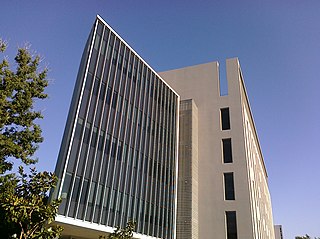
The Beckman Research Institute of City of Hope (BRI) is a not-for-profit medical research facility located at and partnering with the City of Hope National Medical Center in Duarte, California, United States. It is dedicated to studying normal and abnormal biological processes which may be related to cancer, diabetes, HIV/AIDS and other life-threatening diseases. Both basic and clinical research are carried out in cooperation with the City of Hope National Medical Center. The institute itself is organized into more than 20 departments and divisions. As of 2021, the director is Steven T. Rosen. The Beckman Research Institute also hosts the Irell & Manella Graduate School of Biological Sciences whose founding dean was Arthur Riggs.

St. Jude Children's Research Hospital is a pediatric treatment and research headquartered in Memphis, Tennessee. Founded by entertainer Danny Thomas in 1962, it is a 501(c)(3) designated nonprofit medical corporation which focuses on children's catastrophic diseases, particularly leukemia and other cancers. In the 2021 fiscal year, St. Jude received $2 billion in donations. Daily operating costs average $1.7 million, but patients are not charged for care. St. Jude’s covers some, but not all cancer-related costs. St. Jude treats patients up to age 21, and for some conditions, up to age 25.

Sir Martin John EvansFLSW is an English biologist who, with Matthew Kaufman, was the first to culture mice embryonic stem cells and cultivate them in a laboratory in 1981. He is also known, along with Mario Capecchi and Oliver Smithies, for his work in the development of the knockout mouse and the related technology of gene targeting, a method of using embryonic stem cells to create specific gene modifications in mice. In 2007, the three shared the Nobel Prize in Physiology or Medicine in recognition of their discovery and contribution to the efforts to develop new treatments for illnesses in humans.

WiCell Research Institute is a scientific research institute in Madison, Wisconsin that focuses on stem cell research. Independently governed and supported as a 501(c)(3) organization, WiCell operates as an affiliate of the Wisconsin Alumni Research Foundation and works to advance stem cell research at the University of Wisconsin–Madison and beyond.

Susan G. Komen is a breast cancer organization in the United States.
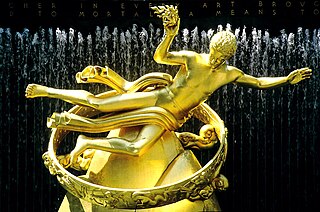
The stem cell controversy concerns the ethics of research involving the development and use of human embryos. Most commonly, this controversy focuses on embryonic stem cells. Not all stem cell research involves human embryos. For example, adult stem cells, amniotic stem cells, and induced pluripotent stem cells do not involve creating, using, or destroying human embryos, and thus are minimally, if at all, controversial. Many less controversial sources of acquiring stem cells include using cells from the umbilical cord, breast milk, and bone marrow, which are not pluripotent.
Robert Allan Weinberg is an American biologist, Daniel K. Ludwig Professor for Cancer Research at Massachusetts Institute of Technology (MIT), director of the Ludwig Center of the MIT, and American Cancer Society Research Professor. His research is in the area of oncogenes and the genetic basis of human cancer.

Mary-Claire King is an American geneticist. She was the first to show that breast cancer can be inherited due to mutations in the gene she called BRCA1. She studies human genetics and is particularly interested in genetic heterogeneity and complex traits. She studies the interaction of genetics and environmental influences and their effects on human conditions such as breast and ovarian cancer, inherited deafness, schizophrenia, HIV, systemic lupus erythematosus and rheumatoid arthritis. She has been the American Cancer Society Professor of the Department of Genome Sciences and of Medical Genetics in the Department of Medicine at the University of Washington since 1995.
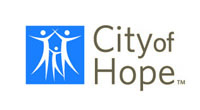
City of Hope is a private, non-profit clinical research center, hospital and graduate school located in Duarte, California, United States. The center's main campus resides on 110 acres (45 ha) of land adjacent to the boundaries of Duarte and Irwindale, with a network of clinical practice locations throughout Southern California, satellite offices in Monrovia and Irwindale, and regional fundraising offices throughout the United States.
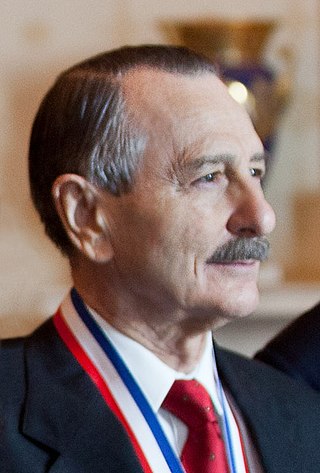
Ralph Lawrence Brinster is an American geneticist, National Medal of Science laureate, and Richard King Mellon Professor of Reproductive Physiology at the School of Veterinary Medicine, University of Pennsylvania.

The Breast Cancer Research Foundation (BCRF) is an independent, not-for-profit organization which has raised $569.4 million to support clinical and translational research on breast cancer at medical institutions in the United States and abroad. BCRF currently funds over 255 researchers in 14 countries.

Janet Rossant, is a developmental biologist well known for her contributions to the understanding of the role of genes in embryo development. She is a world renowned leader in developmental biology. Her current research interests focus on stem cells, molecular genetics, and developmental biology. Specifically, she uses cellular and genetic manipulation techniques to study how genes control both normal and abnormal development of early mouse embryos. Rossant has discovered information on embryo development, how multiple types of stem cells are established, and the mechanisms by which genes control development. In 1998, her work helped lead to the discovery of the trophoblast stem cell, which has assisted in showing how congenital anomalies in the heart, blood vessels, and placenta can occur.

The King Hussein Cancer Foundation (KHCF) and Center (KHCC) ,an independent Jordanian non-governmental, non-profit institution. It was established in 2001 by a royal decree issued and is led by Princess Ghida Talal. The foundation's mission is to combat cancer through awareness, prevention, and early detection programs, providing comprehensive care for cancer patients from Jordan and the Arab world, in addition to promoting research and innovation.

The Gift of Life Marrow Registry is a non-profit organization founded in 1991 and headquartered in Boca Raton, Florida that operates a public blood stem cell and bone marrow registry while facilitating transplants for children and adults battling life-threatening illnesses, including leukemia, lymphoma, other cancers and genetic diseases.

Arthur Wesley Nienhuis was an American physician who served as fourth director and CEO of St. Jude Children's Research Hospital from 1993 to 2004. Prior to joining St. Jude, Nienhuis was chief of the Clinical Hematology Branch and deputy clinical director at the National Institutes of Health's Heart, Lung and Blood Institute. His research interests and expertise in bone marrow transplant, gene therapy and genetic testing paved the way for many advances at St. Jude, including breakthroughs in sickle cell disease and other hematological disorders. Nienhuis also made significant achievements in the fields of cell therapy, HIV/AIDS research and inherited immunodeficiencies. Under his leadership, the hospital completed a $1 billion expansion, which included the addition of a Children's GMP, LLC facility. Additionally, Nienhuis oversaw the creation of the Departments of Developmental Neurobiology and Structural Biology.

The Llura Liggett Gund Award honors researchers for career achievements that have significantly advanced the research and development of preventions, treatments and cures for eye disease.

George Quentin Daley is the Dean of the Faculty of Medicine, Caroline Shields Walker Professor of Medicine, and Professor of Biological Chemistry and Molecular Pharmacology at Harvard Medical School. He was formerly the Robert A. Stranahan Professor of Pediatrics at Harvard Medical School, Director of the Stem Cell Transplantation Program at Boston Children's Hospital, and an investigator of the Howard Hughes Medical Institute, Associate Director of Children's Stem Cell Program, a member of the Executive Committee of the Harvard Stem Cell Institute. He is a past president of the International Society for Stem Cell Research (2007–2008).

Diffuse midline glioma, H3 K27-altered (DMG) is a fatal tumour that arises in midline structures of the brain, most commonly the brainstem, thalamus and spinal cord. When located in the pons it is also known as diffuse intrinsic pontine glioma (DIPG).
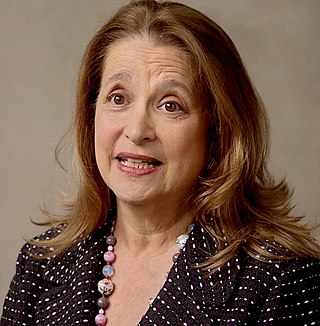
Susan Lynn Solomon was an American executive and lawyer. She was the chief executive officer and co-founder of the New York Stem Cell Foundation (NYSCF).
Leonard B. Robinson was an American charity worker who became known as the Baltimore Batman after dressing up as Batman and visiting children in Baltimore, Maryland-area hospitals. He gained fame in 2012 when a video of him being pulled over for an issue with a license plate went viral. On August 16, 2015, he was killed along Interstate 70 when his parked vehicle was struck by another motorist. Support for Robinson's philanthropy has come from former Super Bowl MVP Ray Lewis, musician John Mayer, and the official Batman Facebook page. Robinson was an avid Baltimore Ravens fan, and attended both of the Ravens' Super Bowls during the 2000 and 2012 seasons. He befriended some of the Ravens' players and staff members as he often attended their charitable functions, especially if they were for children.

















